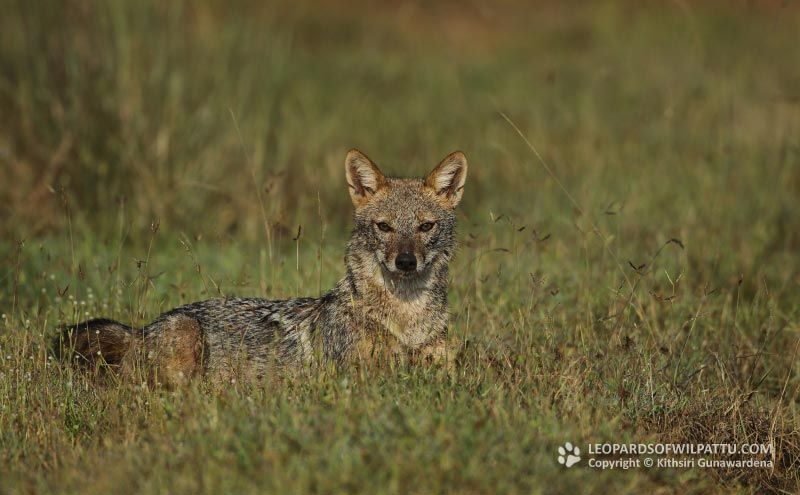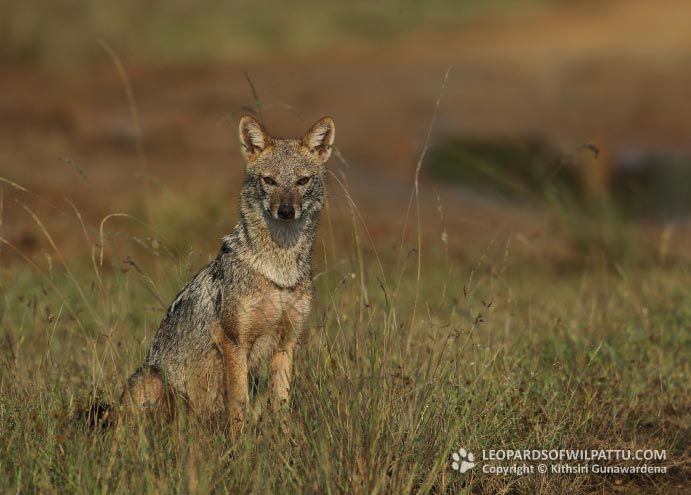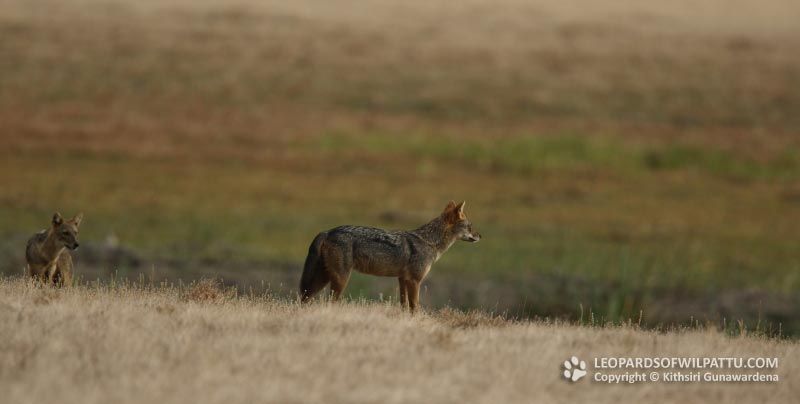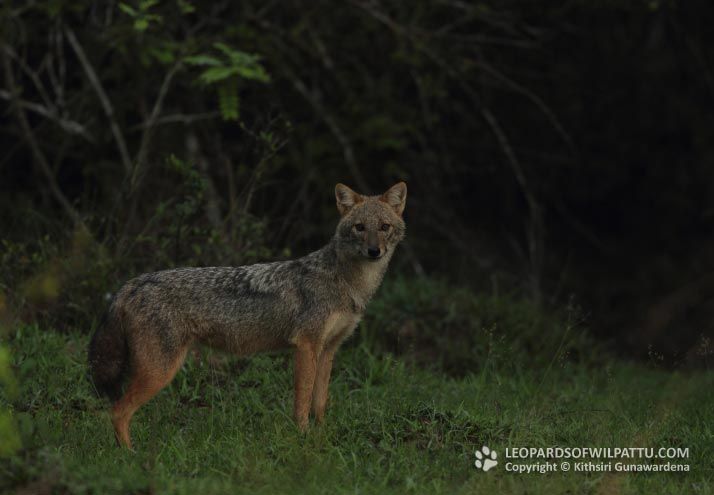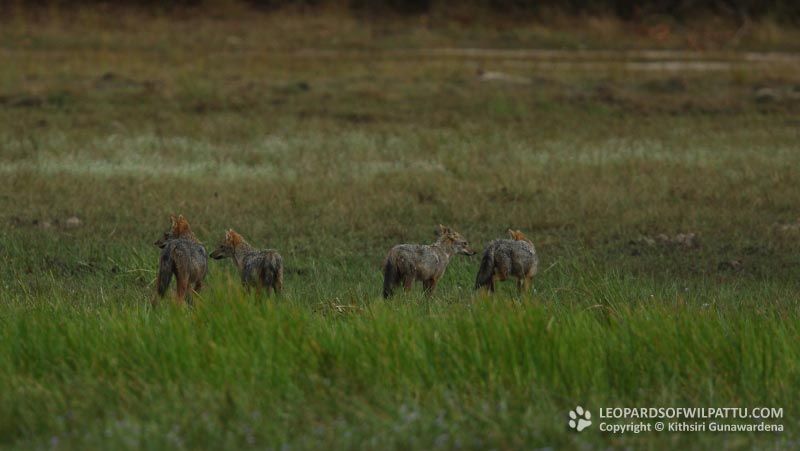
Mammals ‹‹ Go Back
Twelve subspecies of this interesting species have been recognized in the world. They are found from North and North-east Africa to Indochina. The Golden Jackal occur in Senegal, Morocco, Algeria, Tunisia, Libiya, Nigeria, Chad, Tanzania, countries in the Arabian Peninsular, Western Europe, to Bulgeria, Austria, Italy, Turkey, Syria, Iran, Iraq, Central Asia, Indian Subcontinent, Myanmar, Thailand and Indochina.
The conservation status of this species is regarded as Least Concerned (National Red List 2012) and it is protected under the Fauna and Flora Protection Ordinance as amended by Act No. 22 of 2009.
This species has been recorded at an elevation of 3800 meters in Ethiopia and is said to be common at altitudes of approximately 2000 meters in India. However even though Golden Jackals are occasionally reported from altitudes of 2000 meters in the hills and are found in small numbers in the wet zone areas in Sri Lanka, it is primarily an animal of the open areas of the dry zone. I have heard the call of this species, which is an ascending wailing howl, at night at Athwelthota and Bandarawela in the wet zone and observed one at Maharagama, just outside Colombo, on the main road close to a rubbish dump around mid night in May 1999. In populated areas the Jackal has altered its behavior to be mostly nocturnal, however in almost all the Dry Zone National Parks they are commonly seen during the day. In January 2000 at Udawalawa National Park I counted 21 Golden Jackals, which is the highest I have counted within a day at a National Park.
Even though Golden Jackals are often seen scavenging and feeding on carrion they are opportunistic animals that can survive on an omnivorous diet and when in a group, engage in hunting as well. In Wasgomuwa National Park once I observed 6 Jackals acting together in successfully separating a Spotted Deer fawn from its mother, killing it and feeding on the carcass. When I arrived the female Spotted Deer and the fawn were in an open glade and were not accompanied by a herd. The fawn had fresh wounds and was bleeding. While two Jackals kept on harassing the doe and chased it away, the others held on to the fawn and continued to bite it viciously. Even though the doe on a few occasions tried to approach the fawn that was crying out, the two jackals kept on circling her and she gave up and ran in to the forest. Thereafter all six of them attacked the injured fawn and killed it quickly. Even though there were many squabbles between them while feeding they all fed on the carcass. I was not able to wait until the end, as I had to leave to reach the park entrance by 6.30 p.m.
In Wilpattu Golden Jackal is not uncommon and can be seen through out the park. They are usually seen in pairs and some time in small family groups of about four. I have seen them at many locations including Maradanmaduwa, Kuruttupandi Villu, Borupan Wila, Panikkar Villu, Tala Wila, Kokkare Villu and Mahapatessa.

